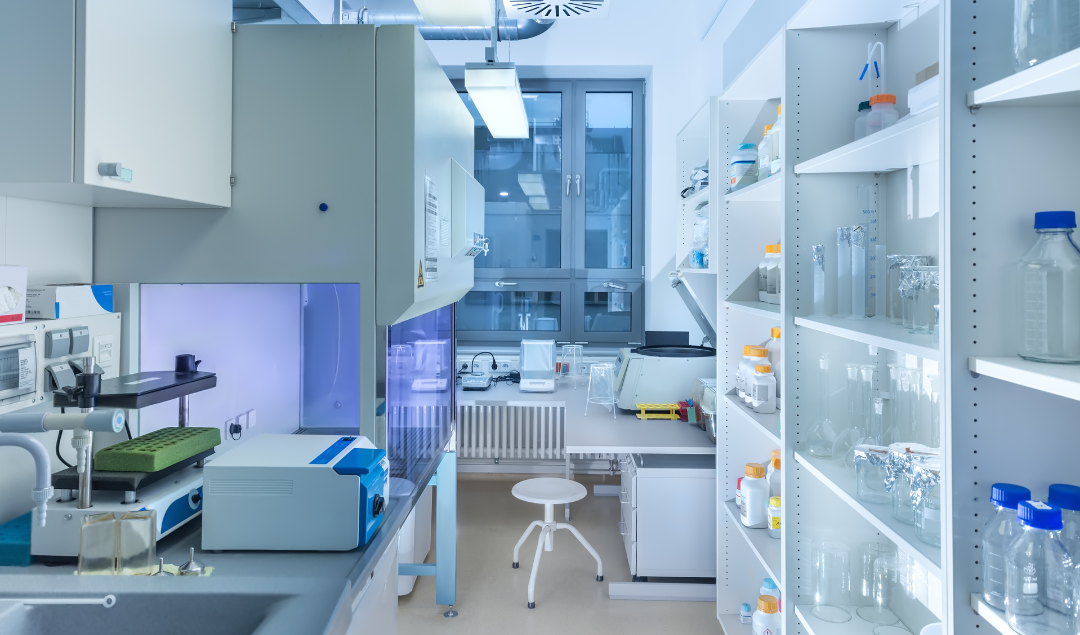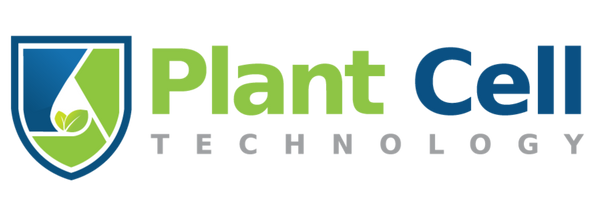
Maintaining a Clean Tissue Culture Lab Setting Using Aseptic Techniques
As a content and community manager, I leverage my expertise in plant biotechnology, passion for tissue culture, and writing skills to create compelling articles, simplify intricate scientific concepts, and address your inquiries. As a dedicated science communicator, I strive to spark curiosity and foster a love for science in my audience.


Introduction to Aspetic Technqiues
Don’t even think about getting any success in tissue culture when you aren’t serious about keeping a clean and sterile environment.
Tissue culture is not cutting, drafting, or seed sowing.
It’s an advanced approach where, using just a few tissues of the plant, you can grow a whole pant in a sterile environment on a nutrient media.
However, it demands strict sterile environment for the successful development of plants in vitro.
Why is it so?
Though a complete plant has a very fine tuned mechanism for fighting pathogens or any disease-causing environment, a few tissues might not have the ability. Additionally, the tissue culture media contains sugar, which makes it appropriate for microbes or or disease-causing organisms to start growing in the media if introduced by any means.
What Are The Sources of Contaminants?
- Air
- Water
- Vessels
- Equipment
- Tools
- And, even your hands
And, any other thing that’s not clean! And, here CLEAN means “that’s not 100% clean using suitable aseptic techniques”.
This article expands on aseptic techniques, the available approaches, and what equipment and tools can be sterilized or cleaned using a particular method.

What is Aseptic Technique (OR Sterile Technique)?
The only way to fight contamination is “PREVENTION, and you can do it by using appropriate sterile techniques at all the stages of the tissue culture process.
Those tiny microbes sitting on your equipment and tools need to be killed before they reach your pretty plants. This is where aseptic techniques help.
Aseptic techniques are crucial practices in plant tissue culture to prevent contamination by microorganisms like bacteria, fungi, and viruses. These contaminants can harm or kill the delicate plant tissues being cultured.
Benefits of Aseptic Techniques:
- Maintain healthy plant tissues for growth and development.
- Enable successful experimentation and propagation of plants.
- Reduce the risk of failed cultures due to contaminants.
Types of Aseptic techniques
Maintaining a sterile environment is crucial for successful plant tissue culture. Here are the main methods used for sterilizing various materials and equipment:
1. Dry Heat Sterilization:
- Heat-resistant glassware, metal instruments, and tools like scalpels and forceps that can withstand high temperatures without losing their sharpness or functionality.
-
Temperature and Time:
- 160°C for 45 minutes
- 170°C for 18 minutes
- 180°C for 7.5 minutes
- Process: Wrap instruments loosely in heavy-duty aluminum foil to prevent dust and debris from settling on them during the heating process. Once wrapped, place them in a drying oven preheated to the desired temperature (e.g., 160°C, 170°C, or 180°C depending on the chosen sterilization time).
It's important to note that ovens typically take about an hour to reach the sterilization temperature. Therefore, avoid overloading the oven, as this can affect proper heat distribution and compromise sterilization efficacy.
2. Wet Heat Sterilization (Autoclaving):
- Liquids, paper products (like filter paper), and glassware that can withstand high pressure and temperature. This is the preferred method for sterilizing culture media and solutions.
- Equipment: Autoclave (a pressure cooker specifically designed for laboratory use)
- Wrap materials loosely in un-waxed paper to allow for steam penetration during sterilization.
- Standard sterilization settings for most culture media: 121°C and 15 pounds per square inch (psi) for 15 minutes (assuming a liquid volume of 50 cubic cm).
- Adjust sterilization time for larger volumes; consult reference tables for specific time adjustments based on volume.
- Allow pressure to return to atmospheric level gradually after sterilization to prevent boiling of liquids.
- Over-autoclaving can degrade heat-sensitive components in the media, so avoid exceeding recommended times and temperatures.

Alternatives for Laboratories Without Autoclaves:
- Pressure Cooker: In situations where an autoclave is unavailable, a pressure cooker can be used for basic sterilization at settings similar to an autoclave (121°C and 15 psi). However, it's crucial to validate the pressure cooker's performance and ensure it reaches and maintains the required temperature and pressure for the desired sterilization time.
3. Ultrafiltration:
- Ideal for: Heat-sensitive media components like growth hormones, vitamins, and other supplements that can be denatured or lose their effectiveness at high temperatures used in autoclaving.
- Process:
- The solution containing the heat-sensitive components is passed through a sterile membrane filter unit attached to a syringe.
- The filter, with a pore size of 0.22 µm or smaller, allows water and solutes to pass through while trapping bacteria, fungi, and other microorganisms.
- Various types of sterile membrane filters are available, such as Millex, Nucleopore (disposable), Fluoropore, and Durapore.
- Benefits of Durapore Filters:
- Recommended for tissue culture due to their optimal pore size (0.4 µm-0.22 µm) for eliminating microorganisms.
- They lack impregnated surfactants that can potentially interfere with plant growth hormones in the media.
4. Chemical Sterilization:
- Ideal for: Disinfecting work surfaces, instruments, and the immediate work area within a laminar flow cabinet to provide a sterile environment to your cultures.
- Solutions: 70% ethanol or isopropanol are commonly used due to their effectiveness against a broad range of bacteria and fungi.
- Limitations: Not suitable for sterilizing plant tissues or media due to their limited effectiveness against some microorganisms, particularly spores. Additionally, prolonged exposure to these solutions can damage certain instruments.
5. Surface Sterilization of Plant Material:
- Purpose: Eliminate surface microbes on plant starting material (cuttings or tissues) before transferring them into sterile culture media.
- Solutions: Sodium hypochlorite (bleach) or calcium hypochlorite solutions diluted with water are commonly used.
- Process:
- Prepare a dilute bleach solution (typically 1:9 bleach-to-water ratio) and immerse the explants for a controlled period (depending on the plant species and tissue type).
- Rinse the explants thoroughly with several changes of sterile double-distilled water to remove residual chlorine that can be harmful to plant tissues. However, for tissues with waxy or suberin layers (protective coatings on some plants), a brief pre-treatment with a mild detergent like Tween 80 may be necessary to enhance the effectiveness of the bleach solution.
Important Note: Surface sterilization only eliminates surface contaminants and cannot guarantee complete sterility within the plant tissues.
6. Antibiotic Use (Limited Application and a chemcical based aseptic technique):
- Generally discouraged due to potential growth inhibition of explants and development of antibiotic resistance in microorganisms.
- Gentamicin may be used in specific cases at very low concentrations (50-100 µg/L).
7. Plant Preservative Mixture (PPM—a chemcical based aseptic technique):
- A broad-spectrum biocide that helps protect your cultures from all kind of contaminants, whether they are fungi, bacteria, or molds.
- Effective against various types of microbial contamination, including airborne, waterborne, endogenous, and human-introduced.
- Compatible with autoclaving and has no significant inhibitory effect on plant growth.
- Effective for most seed-bearing plants (angiosperms and gymnosperms).
Limitations: Not suggested for ferns, mosses, and algae. Concentration may vary depending on the plant species.
General Best Practices to Avoid Contamination
-
Use PPE: Wear gloves and a lab coat, and work within a laminar flow hood to create a barrier between yourself (a potential contaminant) and your delicate plant cells. Remember, regular cleaning and servicing of the hood ensure optimal functionality and protection for your cultures.
-
Keep Your Incubator Clean: Regular cleaning of your incubator is essential, especially if it lacks a self-cleaning function. Always follow the manufacturer's specific cleaning protocols.

-
Disinfection is Key: Develop a routine for sanitizing everything with 70% ethanol solution. This includes your gloves, equipment, and anything you bring into the sterile environment. Wash your hands thoroughly before handling culture media, and maintain overall cleanliness of your lab attire.
- Hood Hygiene: After each session, disinfect the hood's work surface using sterilizing agents or 70% ethanol solution. Avoid keeping waste bins inside the hood, as they can compromise sterility. Finally, activate the UV light for overnight sterilization.
-
Minimize Cell Exposure: While transfers between the hood and incubator or viewing under a microscope are sometimes necessary, strive to minimize the time your cells spend exposed to an unsterile environment.
-
Keep Everything Organized: Maintain a clean and organized workspace. Furthermore, label everything clearly and follow established procedures meticulously. In consequence, a well-organized lab minimizes the risk of accidental contamination and wasted time.

-
Document Everything: Keeping a detailed record of your procedures is crucial. In addition to following proper aseptic technique, meticulous documentation is essential for successful plant tissue culture. This includes the type and duration of sterilization techniques used for equipment and explants, as well as the specific PPM concentration (if applicable) for each experiment. This documentation allows you to analyze results, identify potential sources of contamination if issues arise, and replicate successful protocols for future experiments.

Plant Cell Technology Offers Expert Tissue Culture Solutions
Are you passionate about plants and fascinated by the potential of plant tissue culture? Plant Cell Technology understands your aspirations and is here to be your trusted partner in building a thriving home lab.
We recognize that setting up a home lab and mastering the intricacies of plant tissue culture can be challenging. However, with the right tools, knowledge, and support, you can cultivate success and unlock a world of possibilities.
How Plant Cell Technology Empowers You:
- Essential Supplies: Access a comprehensive range of high-quality media, agar, gelling agents, culture vessels, and more, ensuring you have the right tools for every step.
- Expert Knowledge: Gain confidence through our informative resources:
- Comprehensive blog articles: Explore topics from basic principles to advanced techniques.
- Master Classes: Immerse yourself in in-depth sessions led by experienced instructors, gaining valuable hands-on experience and mastering advanced techniques.
- Consultation Services: Get personalized advice and tailored solutions from our experts, ensuring your home lab journey flourishes.
- Community Connection: Join our vibrant community forum to connect with fellow enthusiasts, share experiences, and stay updated on the latest advancements.
Blog Categories
View by Level
Popular Blogs

How Samantha Bridges the Gap Between the Nursery and the Lab
The Introduction Building a tissue culture program from the ground up requires more than just scientific knowledge—it requires the grit...
Read More
Understanding The Synthetic Seed Technology
Introduction Let’s be honest: traditional plant propagation can be a logistical nightmare. If you’re working with recalcitrant species—those stubborn plants...
Read MoreSubscribe to Our Newsletter
1 comment
Thank you very much Anjali Singh, MS! I have learnt a lot more from your blog.
Regards!









Join the conversation
Your email address will not be published. Required fields are marked